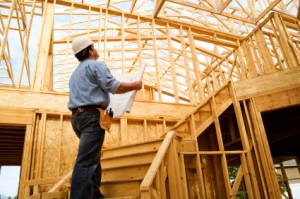What is Builders Risk Insurance?
Most commercial property policies are intended to cover completed buildings. While many policies extend Building coverage to include Newly Acquired or Constructed Property, they afford very limited coverage for buildings that are being built.
Fortunately, special property policies are available to cover buildings under construction. These policies are called builders risk insurance. This article will outline key features of a builders risk insurance. It will also highlight some coverages to look for when shopping for builders risk coverage.

It is important to scrutinize the construction contract before buying builders risk insurance. The contract should specify what insurance coverages are required. It should also outline the obligations of the contracting parties, including who is responsible for purchasing builders risk insurance. This duty usually assigned to the project owner or the general contractor (GC).
Named Insureds
No matter who buys the policy it should include, as named insureds, the project owner, the general contractor, and all subcontractors involved in the project. All of these parties have an insurable interest in the project. The GC and the subcontractors have an interest in the building until they have been paid for their work and materials. The project owner has an interest in the building that increases as construction progresses and the owner makes payments to the contractors.
Covered Property
Policies typically cover the building from the time the project begins until the structure is completed. All materials and supplies that become part of the building should be included. Covered property should also include:
- Foundations, excavations, grading, filling and permanent fences
- Temporary structures like forms, fencing, scaffolding
- Property (including materials and supplies) in transit
- Property in temporary storage away from the construction site
- Construction trailers (unless they are covered by another policy)
Excluded Property
Most builders risk policies exclude land, aircraft, vehicles, watercraft, and existing buildings (buildings present at the job site before the project began). Also excluded are contractors tools and equipment. These items may be covered under a separate contractors equipment policy.
Most builders risk policies exclude the following property. However, some policies add back a limited amount of coverage:
- Waterborne property
- Trees, shrubs and plants
- Roads and other paved surfaces
- Blueprints and other valuable construction documents (cost to research and replace them)
Excluded Perils
Builders risk policies should cover losses caused by any peril that is not specifically excluded. Most policies exclude the major perils like flood, earthquake, war and nuclear hazard. Other excluded perils may include boiler explosion, mechanical breakdown, and criminal acts by named insureds or their employees. The following perils are also excluded but some coverage may be provided by an exception:
- Building Ordinance
- Mold
Additional Coverages
Here are some coverages to look for when shopping for a builders risk policy:
- Debris Removal and Pollution Cleanup These coverages are similar to the Debris Removal, and Pollution Cleanup Coverage afforded by a standard commercial property policy.
- Soft Costs Soft costs means expenses other than the cost of labor or materials. Examples of soft costs are design fees, legal and other professional fees, advertising costs, financing costs, administrative expenses and insurance premiums. Coverage applies to only to extra costs incurred due to a covered physical loss.
- Fire Department Service Charges Covers fire-fighting charges you are obligated to pay under a contract.
- Fire Equipment Recharge Costs Covers the cost to refill your fire protection systems after a fire
- Delayed Opening Covers income lost and extra expenses incurred due to a delay in the completion of the building when the delay results from a physical loss by a covered peril.
Waiver of Subrogation
A builders risk policy is intended to serve as the source of coverage for property damage to the building during its construction. This includes damage caused by a natural event (such as lightning) as well as damage caused by a covered peril (such as fire) caused by the negligence of the owner or a contractor.
A typical construction contract requires all parties to the agreement to waive their rights to sue one another to the extent losses are covered by the builders risk policy. This prevents lawsuits between the parties and facilitates loss recovery. Accordingly, the policy should contain a waiver of subrogation clause. This clause should allow insureds to waive their rights to sue other parties before a loss occurs.
Property Value and Premium

While a building is being constructed, its value steadily increases until the building is completed. There are two basic types of policies. Under a completed value form, the value of the finished building is the limit of insurance. This limit (amount of insurance) remains unchanged for the duration of the policy. Under a reporting form, the value of the building is reported periodically to the insurer. The amount of insurance available steadily rises as the reported value increases. Reporting forms can generate administrative hassles and coinsurance penalties so completed value forms are preferable.
While some builders risk policies pay losses based on actual cash value, many provide replacement cost coverage. The premium is typically calculated by multiplying a rate times one percent of the contract price (rate X contract price/100).
When Coverage Ends
A builders risk policy will state when coverage ends. This may occur when any of a list of specified events occurs. For instance, coverage may end at the earliest of when the policy expires, the building is completed, the building is accepted by the buyer, or the named insured no longer has an interest in the property. Once coverage ends the completed building should be insured by the owner under a commercial property policy.